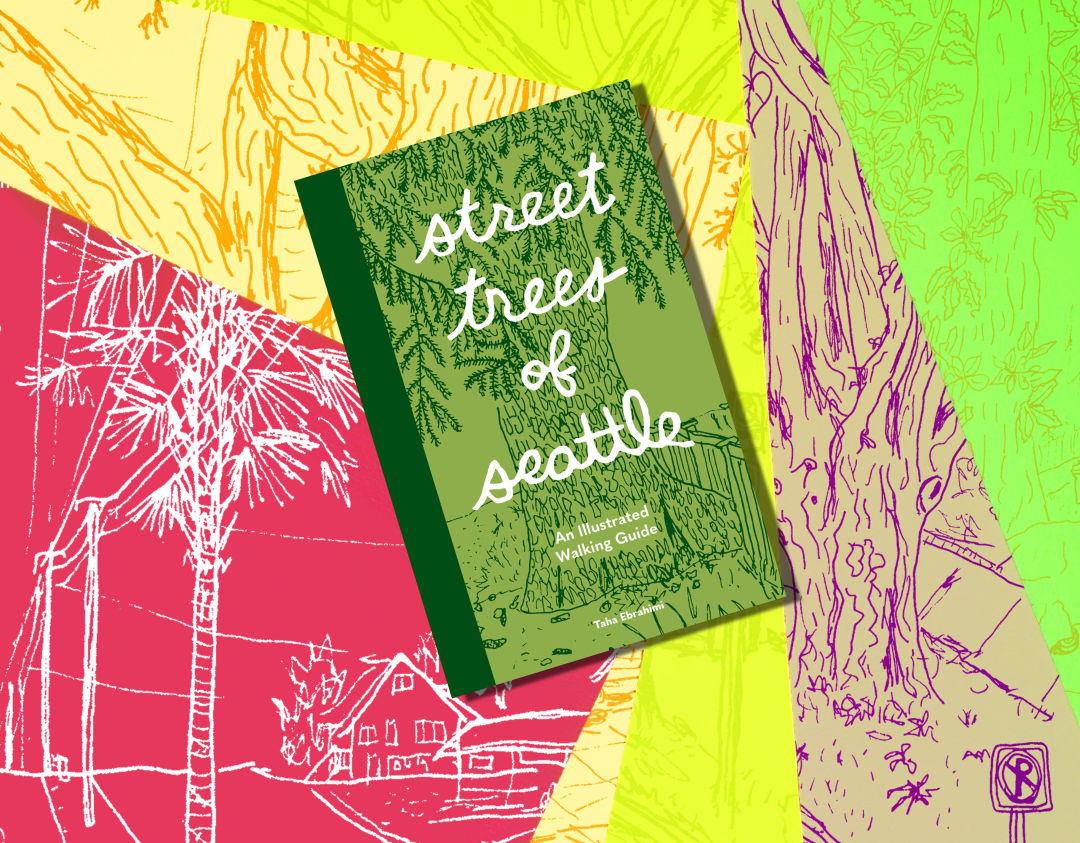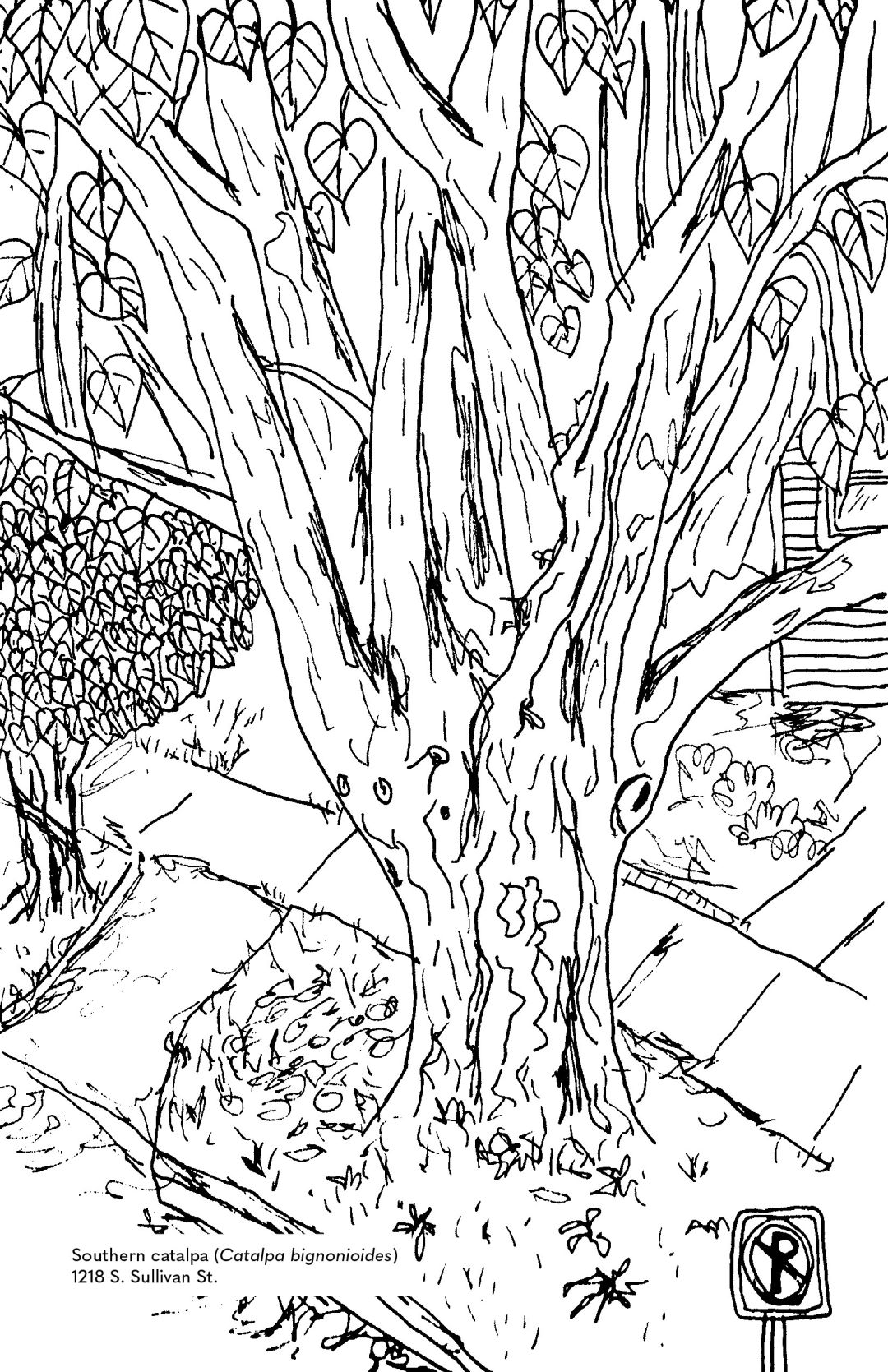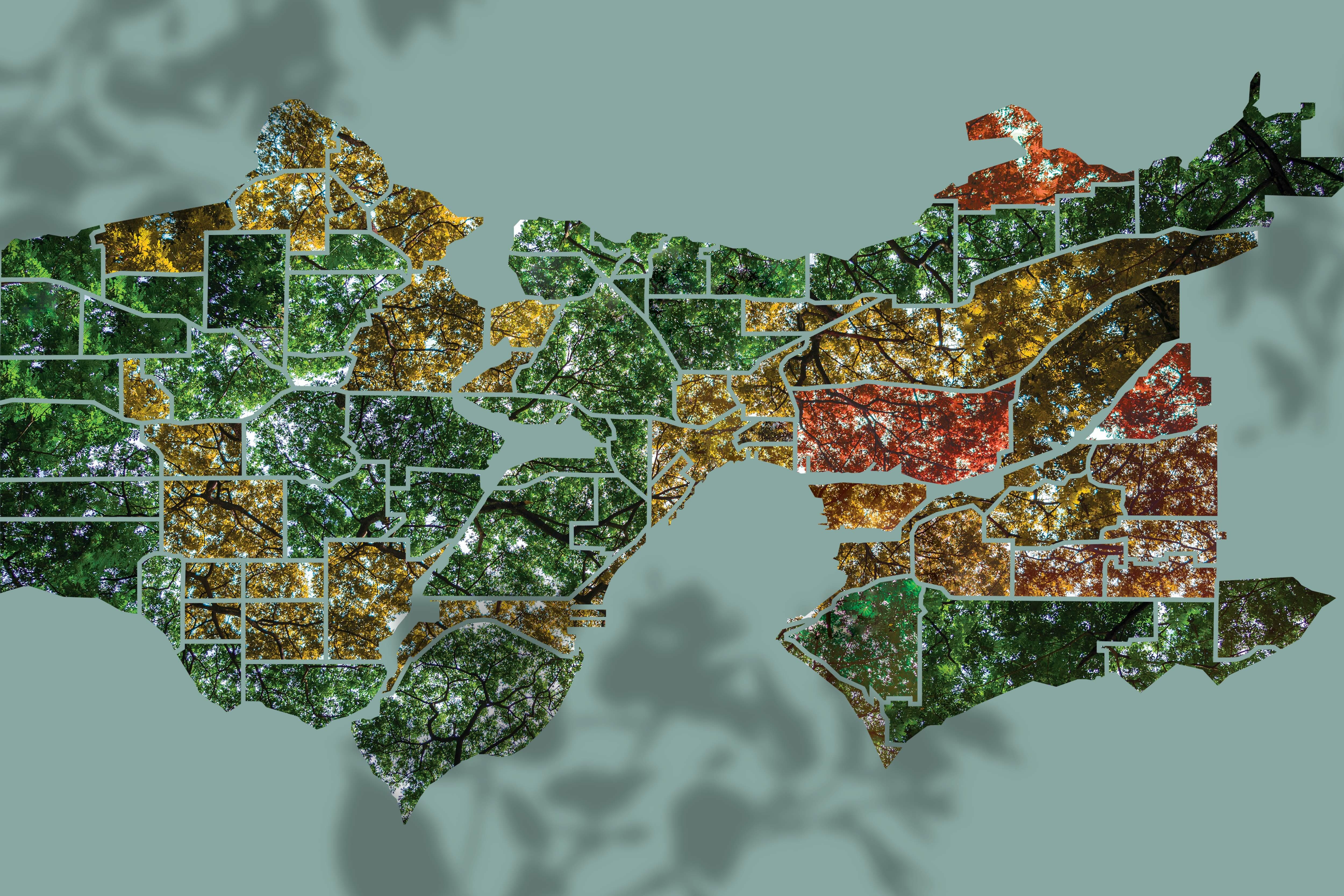Meet 5 of Seattle’s Weird and Wonderful Street Trees

Image: Courtesy Sasquatch Books and Seattle Met composite
Taha Ebrahimi has always loved trees. Growing up in Seattle, she remembers spending afternoons playing with the neighbors in an abandoned wooded lot they dubbed “the jungle.” But it wasn’t until the Covid-19 lockdowns that she really began to pay attention to Seattle’s street trees while taking “epic” walks down suddenly carless streets.
“I got interested in them, and I found out that Seattle actually has one of the most diverse collections of street trees in the entire nation,” Ebrahimi says.
Out of that seed of interest grew Street Trees of Seattle, her “illustrated walking guide” to Seattle’s fascinating street trees, published April 16 by Sasquatch Books.
Soon after Ebrahimi set out to document Seattle’s trees, she realized just how challenging it would be. Because less than 5 percent of the Emerald City’s trees are actually native to King County, she couldn’t rely on a regional guide. Instead, she turned to a book called Trees of Seattle from the 1980s, which had the names and addresses of city trees, but no pictures. She then compared the entries in this book with the illustrations in The Sibley Guide to Trees. On her walks, she juggled the two books with her iPhone to guide her to the trees’ addresses.
“You can imagine that that looked ridiculous,” she says.

Image: Courtesy Sasquatch Books
To help keep track of her research, she began to draw maps with leaf shapes on single pieces of paper. She also put her skills as a professional data visualist to work, uncovering a city dataset that offered information about right-of-way trees going back to the 1950s, and incorporating some of what she learned about the city’s widest and oldest trees into her maps. Out of the walks, research and sketches, the book emerged.
“It happened by accident,” she says.
During the process, Ebrahimi learned a lot about trees and what they do for us: A square mile of forest provides oxygen for 10,000 people; trees can lower land surface temperatures by 10 to 20 degrees Celsius; they absorb rainwater, boost mental health; and they suck carbon dioxide out of the atmosphere more successfully than any human-made invention.

Image: courtesy Taha Ebrahimi
And then there’s the diversity: Seattle’s urban canopy is two times more diverse than the East Coast’s and three times more than the Midwest’s.
“I always took it for granted that on a single block, you might see a palm tree, a Doug fir, a Western red cedar, and a dogwood,” Ebrahimi says. “That's not normal in the rest of the United States.”
And because around 95 percent of Seattle’s variety of trees were planted by human beings, learning about them can also teach you about the history of the city itself.
“They provide clues about our past,” Ebrahimi says.
Ebrahimi shared five of the “weirdest” trees she encountered while writing the book.

1. Deodar Cedar
119 North 49th Street, Phinney Ridge
This cedar is tied for the widest cedar tree in Seattle, and it comes with a story.
“While I was looking at that tree, a neighbor came up to me and asked me what I was up to, and they ended up telling me a little bit of neighborhood lore,” Ebrahimi says.
In the early 1900s, the city was struck by a massive winter storm. The occupants of the house where the tree now stands found themselves with extra oil and wanted to find a way to offer some to a poorer family nearby who were shivering through the chill. So they worked out an exchange: the first household would provide the oil, and the second would plant the tree in their yard.

2. Catalpa Tree
1218 South Sullivan Street, South Park
South Park is one of the first Seattle neighborhoods that attempted uniform street tree planning, and this catalpa is the result.
The community decided to graft rows of smaller mop-head catalpas onto the root systems of larger catalpa trees. But over time, some of the original root systems won out.
“You'll look at the street and there'll be all these tiny little mop-head trees. Then here or there, there'll be a tree that has busted out and become its regular huge catalpa shape,” Ebrahimi says. Her second choice is one of the big Catalpas that broke through.
3. Common Orchard Apple
5016 42nd Avenue South, Columbia City
Ebrahimi suspects that this common orchard apple has a not-so-common origin story. Instead of growing in the designated planting strip, it has sprouted out of the other side of the sidewalk.
“I noticed that the people who live there, their garbage cans are on that side. So my assumption is that an apple core had fallen out of the garbage many years ago and grew into that tree,” Ebrahimi says.
If it’s true, it’s a lucky accident: It’s now the second-widest common orchard apple tree in Seattle’s 2nd District.
4. Grand Fir
6237 32nd Avenue Northeast, Ravenna
While grand firs are native to King County, they aren’t common choices for street trees, so Ebrahimi wondered how this one came to be here.
She got her answer when a woman noticed her looking up at it, map in hand, and came out of her home to speak with her. The woman told her that she had planted it as a living Christmas tree for her children in the 1970s.
“When she planted it, it was Christmas tree-sized and shorter than she was, and now it's maybe three stories high,” Ebrahimi says. “It's the second-widest diameter grand fir street tree in the city.”
5. European Chestnut
502 North 47th Street, Phinney Ridge
The widest chestnut street tree in Seattle caught Ebrahimi’s attention more for how it has grown than how it was planted.
“It is pretty amazing because there is a fire hydrant right next to it, and it has grown over the fire hydrant,” she says.




